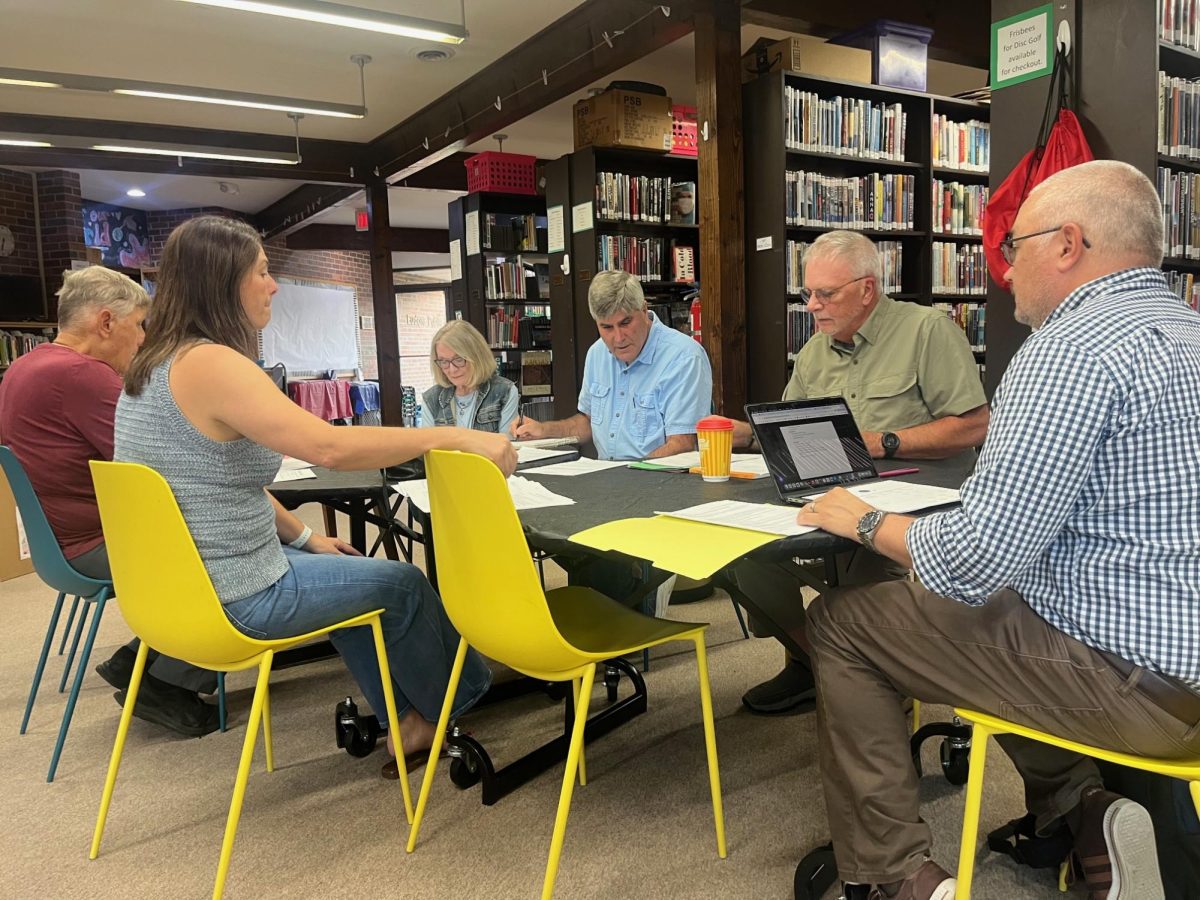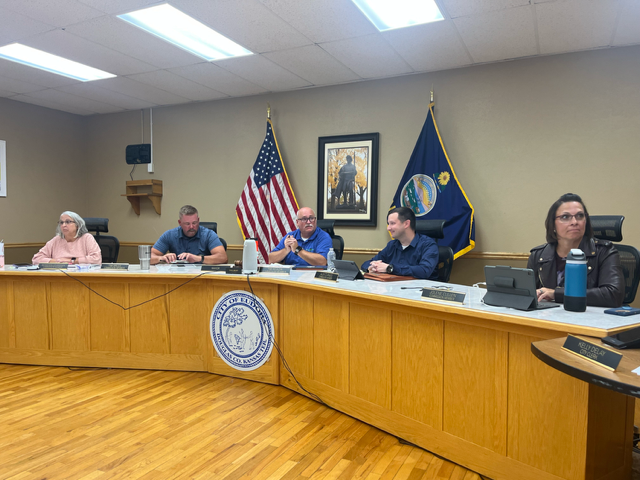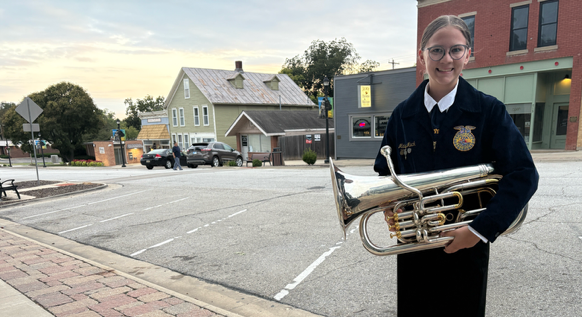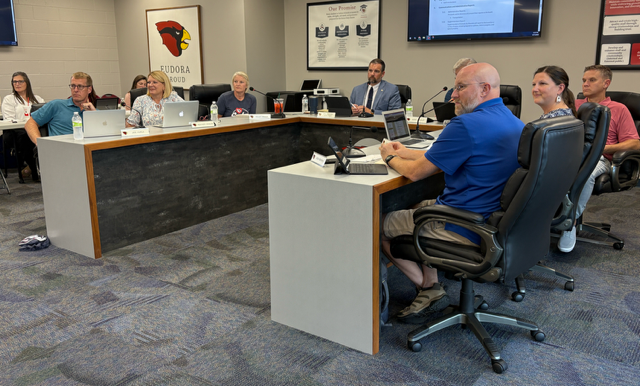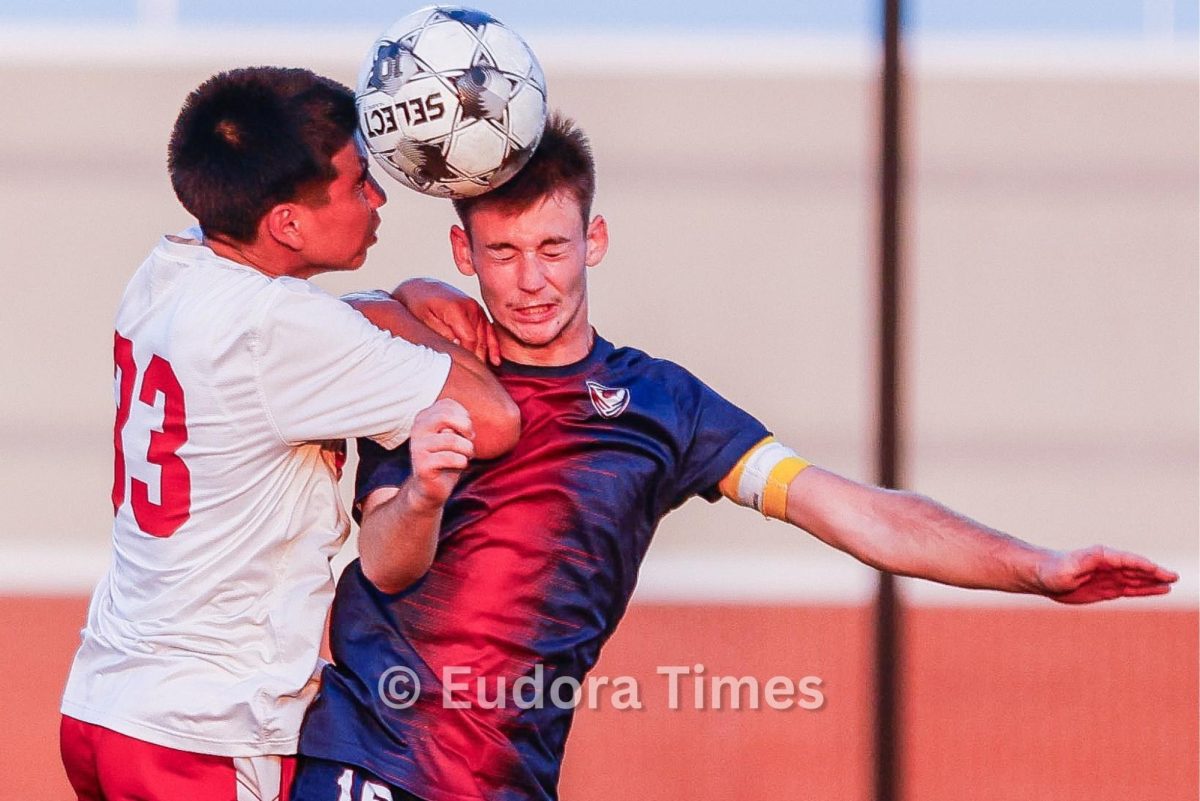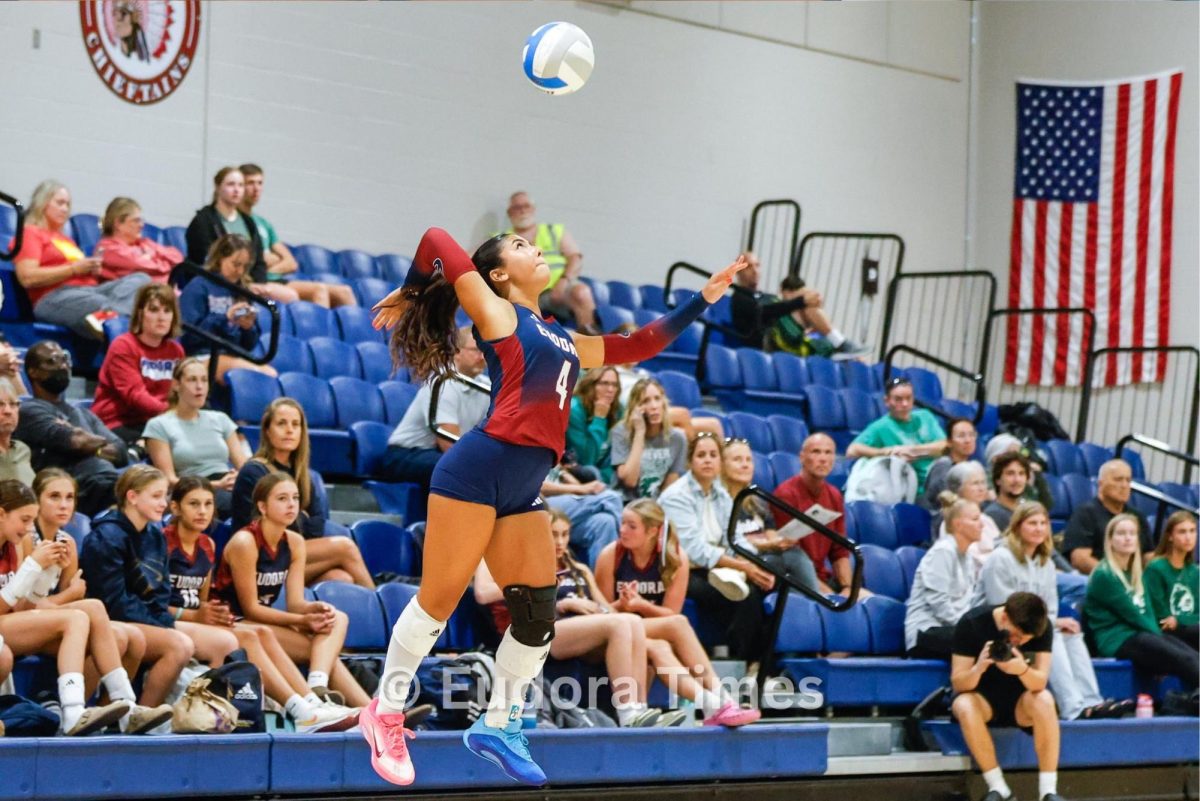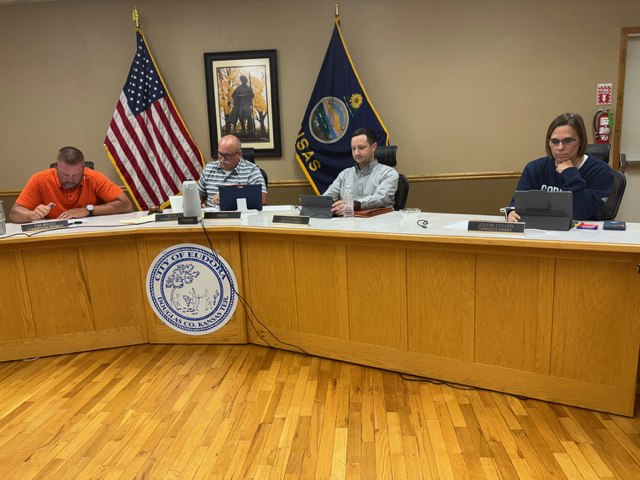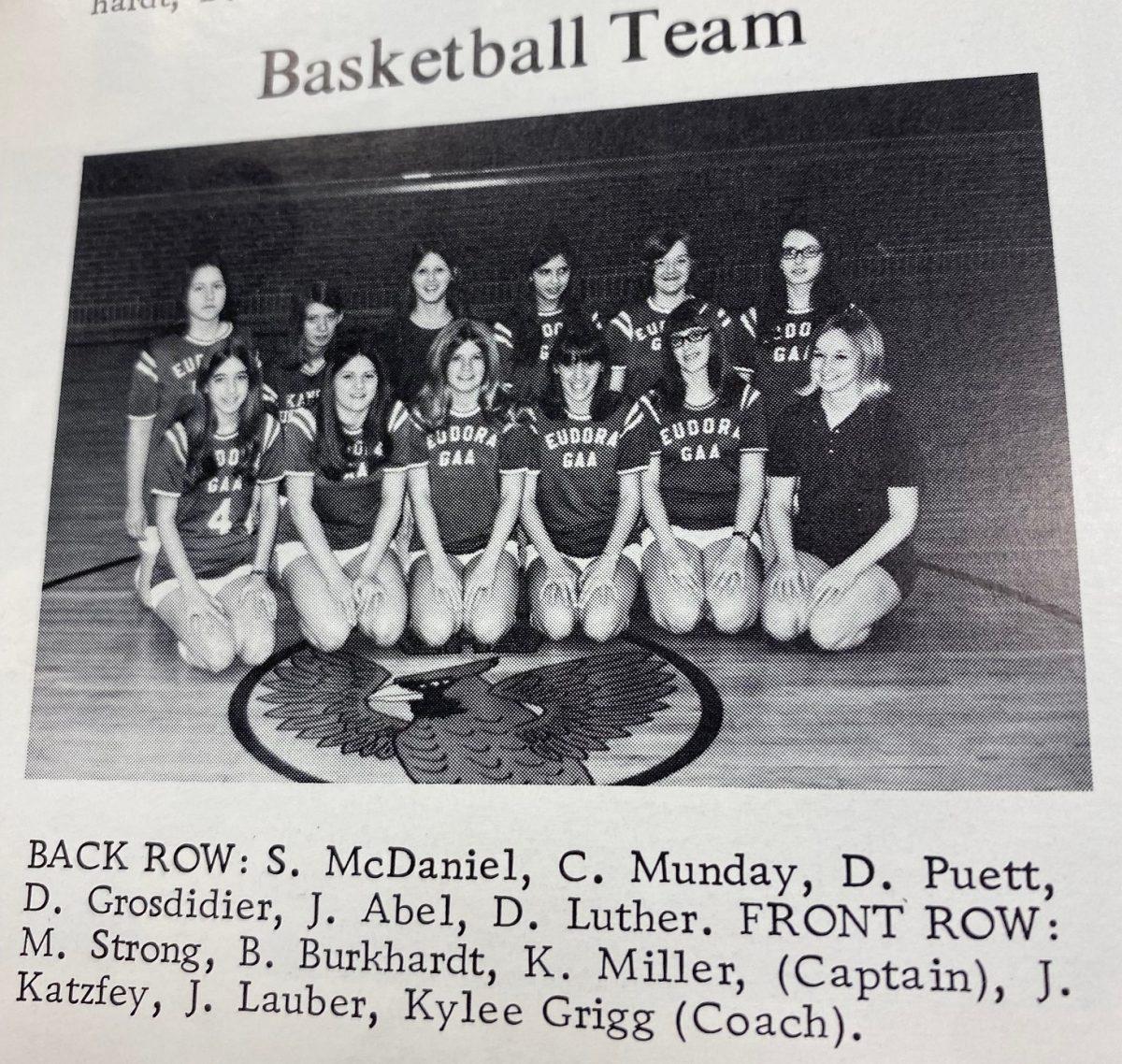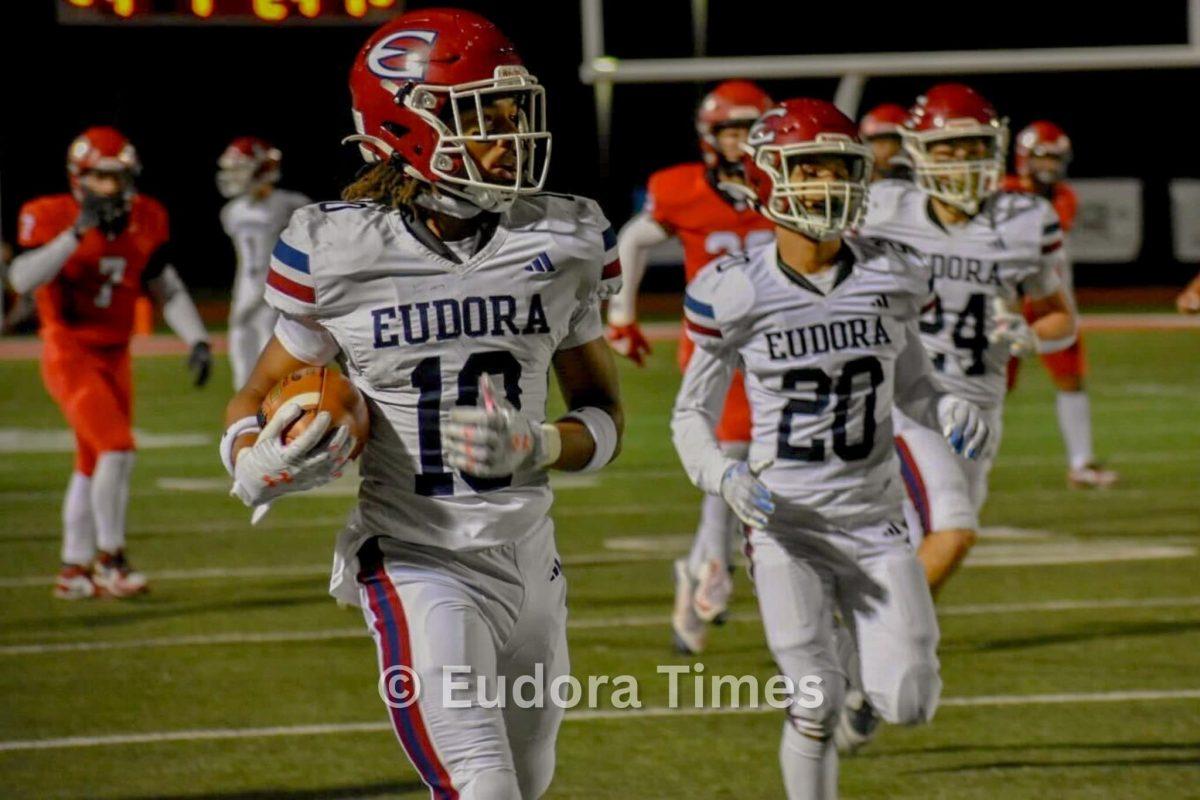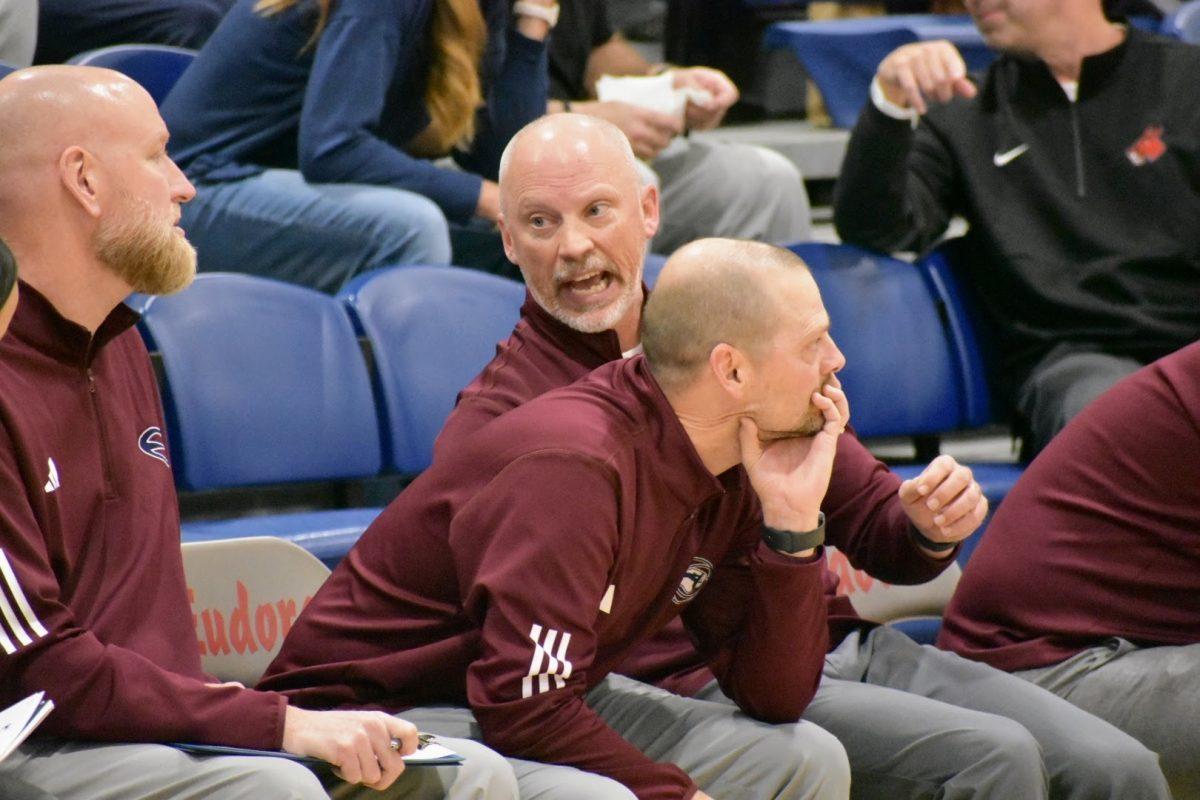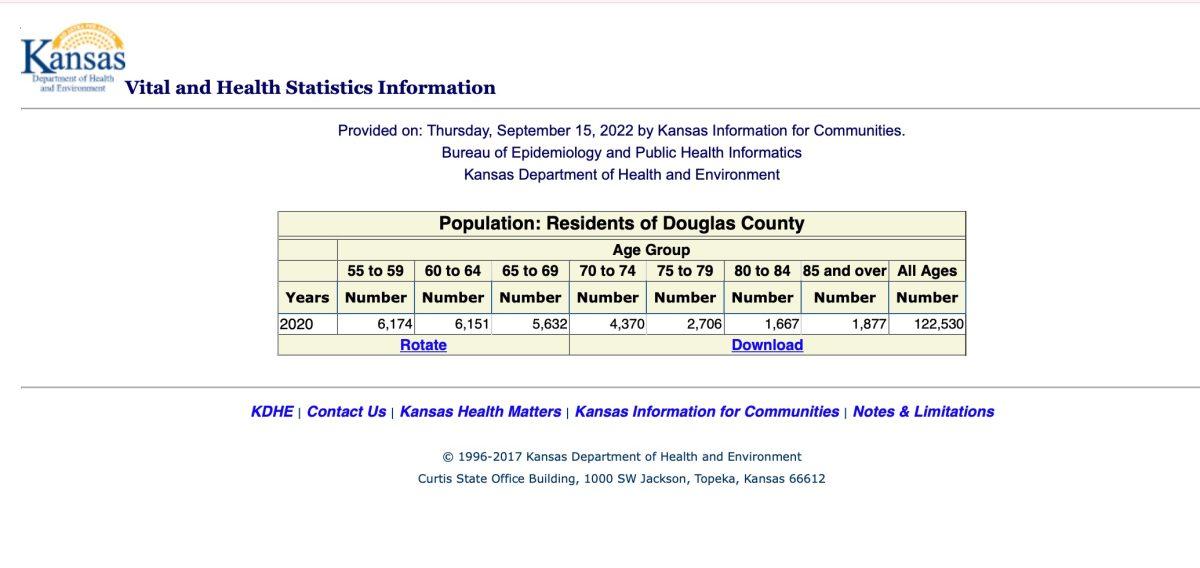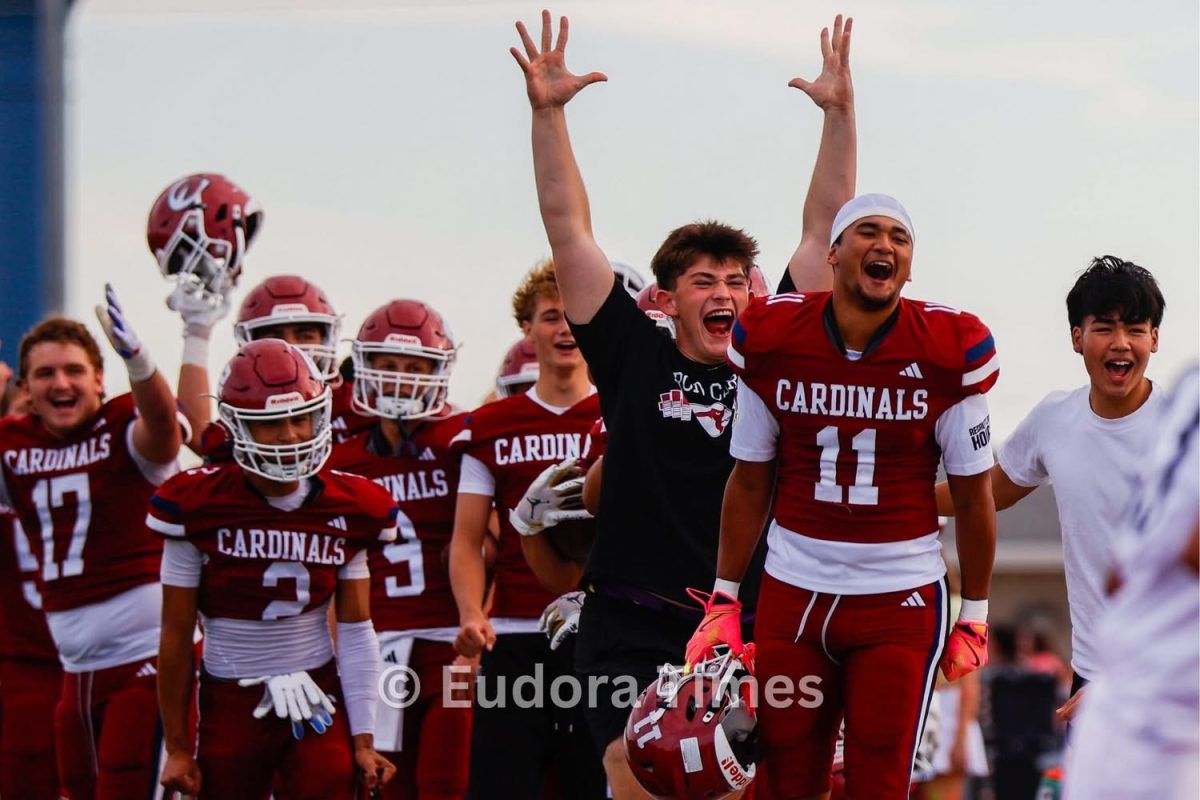This is the third story in a series examining girls sports in Eudora and the 50th anniversary of Title IX.
In 1972, a 37-word law changed the game for women across the country.
Signed into law by President Richard Nixon, Title IX prohibited sex-based discrimination in any educational program receiving federal funding.
Title IX arrived in a time filled with social upheaval, as doors opened for women in their jobs, in sports and in their private lives.
In Eudora, new opportunities in sports and classes opened for girls for the first time. At a Eudora School Board meeting on Feb. 14, 1972, the board unanimously approved plans for an interscholastic girls’ athletic program.
Girls’ basketball and volleyball were available in the 1971-1972 school year based on coverage in The Eudora Enterprise.
However, the history of girls sports in Eudora can actually be traced back to the 1910s.
Early sports history
Eudora Community Museum Director Ben Terwilliger said girls’ participation in sports has fluctuated over the years, depending on when certain sports were available.
Eudora High School had a girls’ basketball team in 1910, around the same time a boys’ team was founded. This lasted through the ‘20s, but mentions of the team were absent from newspapers in the ‘30s.
“It seems like Eudora has a history of women’s sports before Title IX,” Terwilliger said. “I don’t know how that compares to other communities, but there have been women in sports for over 100 years, which is pretty notable and a positive aspect.”
Prior to 1972, the main sport girls could participate in was track and field. Donna Oleson of the Class of 1969 competed in shot put and softball throw, but dreamed of playing other sports like volleyball.
Oleson also said she was part of a group called the Girls Athletic Association during her junior year, but added she doesn’t remember meeting often, or having specific conversations about playing sports.
Oleson said no one in her family or at school really talked about expanding roles for girls in sports.
“I don’t really think it was a conversation,” Oleson said.
In 1956, girls were able to participate in track and field, but there were no other organized teams that played other schools, said Mary (Long) Beem of the Class of 1960.
Beem did shot put for one year and remembered competing against other schools. Girls were able to participate in any events they wanted to.
Beem said students believed the principal didn’t support girls competing in other sports.
“I think our principal didn’t think it was proper. Now I don’t know if that’d be true, but that is what everyone said,” Beem said.
Beem said there were many girls who wanted to play basketball while she was in high school.
“It was mentioned when I was in school and one of the girls, the upperclassmen, was like, ’Oh nope, we can’t have girls’ basketball. We’re not allowed,’” Beem said.
Trudy Bowen of the Class of 1969 said she didn’t want to participate in track and field, but would attend meets to watch the boys compete.
“The girls were encouraged to watch the boys play ball,” Bowen said. “I felt that it was defined that the girls were not going to be encouraged to play in sports. We were always going to be the people who watched and cheered on the boys.”
Like Oleson, Bowen said no one she knew talked about restrictions in place for girls.
“We were at a time where you just had to accept it,” Bowen said. “Parents didn’t go to school board meetings like they do now and talk about things that they wanted to see in the school.”
Bowen said a lot of people went through the Eudora school system successfully, but the adults in charge tended to be narrow-minded prior to the 1970s.
“We were in a male-dominated world, even in Eudora,” Bowen said. “The men ran the town. A lot of people don’t realize how small Eudora was at that time, not only in population, but in their attitudes.”
Larry McPherson served as the school’s athletic director for 32 years, starting in 1970. He said he and other administrators didn’t discuss Title IX that often, and the athletic program always could rely on good participation from students.
“We were always open for more participants, more activities for everybody, not just girls,” McPherson said. “We were just interested in the kids participating.”
McPherson said highlights during his time as athletic director included the boys’ and girls’ track teams going to state competitions. He added that community enthusiasm for sports has always been present.
“It’s built more in the last few years, I think, because the student population has grown,” McPherson said. “It’s always been there, kids have always been eager to participate.”
Beyond sports
Title IX did more for women than allowing them opportunities in sports. It opened doors for girls to fully participate in society.
For Debbie (Burchett) Carden, Class of 1975, Title IX let her pursue an activity she had always been interested in: woodworking. When Eudora High opened up shop classes to girls, Carden was the first to sign up.
She soon encountered obstacles in the classroom that made full participation difficult. In welding, the protective equipment was sized for men, and she had to ask for help from other boys in the class.
“Even though they made welding available to the girls, they didn’t have any plans to protect those girls,” Carden said.
Carden developed a lifelong love of woodworking because of that opportunity and kept up with the hobby for the rest of her life.
Other aspects of Carden’s high school experience drastically changed because of the cultural shift. Birth control was now offered at the Douglas County Health Department, more women were getting their driver’s licenses and more opportunities were available to girls at her school, in sports and otherwise.
“It was an amazing time to be alive, because in Eudora we didn’t have a lot of access to the media on our own, so we didn’t realize the big picture that was happening out there with women’s rights,” Carden said. “Without realizing it, it was probably a very formative thing to watch women’s roles change and women be able to stand up and have a voice. I am very grateful that I got to live during that time and have those choices.”
Kyle Velte, associate law professor at the University of Kansas, studies sexual orientation and discrimination. She said Title IX altered attitudes along with the law.
“Back in the ‘70s before Title IX, there was just a different cultural norm about the role of girls and women in sports,” Velte said. “There was a societal stereotype about what women and girls were and what they should act like. It’s transformed the face of society in schools and beyond for girls and women.”
Fran Martin, Kansas State High School Activities Association assistant executive director, has served in the role for 18 years. Over that time, she’s seen the role of girls in sports continually expand.
“We have tried to make efforts to increase participation in all of our activities, male and female,” Martin said. “Prior to Title IX, opportunities for women in sports were pretty limited. There were no state championships until after 1972. It was a huge step for females to be able to be involved in activities in athletic programs at the middle and high school level.”
Sports had a direct impact on Martin when she was younger and informed her decision to work at KSHSAA.
“I was one of the lucky ones. I started high school in 1976, so I got to have volleyball, basketball and track, because our school had those by then,” Martin said. “Being able to play college basketball and run college track was huge for me. I decided to go into the coaching world because I believe that women need women role models in coaching.”
Cara Kimberlin is in her 11th year as Eudora High’s athletic director and has a rich background with participation in sports. She described her high school self as a “typical tomboy,’ competing in high school volleyball, basketball and track for all four years until graduating 1988.
Kimberlin said she didn’t encounter discussions of Title IX until she took classes for her master’s degree in sports administration and psychology.
“I had several classes that were focused on Title IX, especially when it comes to sports law,” Kimberlin said. “Prior to that, I don’t know that I had any recollection of Title IX. I think that moving on through my career, you probably are more sensitive to the possibility of inequality.”
Future of Title IX
Velte said while the language of Title IX is not very fluid, debate over the law’s scope is ever-evolving. The law not only provides federal money for girls’ sports program, but also protects girls from discrimination based on sex in other situations, like sexual harassment on college campuses.
“There has been a lot of change over the last 50 years over how Title IX should be applied,” Velte said. “There’s movement and there’s controversy and there’s debate over the scope of coverage. Congress could come back at any time and say, ‘We’re going to erase Title IX from the statute book.’ I highly doubt that would ever happen because it has been probably the most successful civil rights bill for women and girls ever.”
Velte said issues of discrimination against girls in sports still occur across the country. In 2021, disparities between amenities provided to the men’s basketball teams and the women’s’ teams at the NCAA tournament became clear after athletes posted photos of their facilities.
Velte said the NCAA’s decision to provide a subpar gym for women was a violation of Title IX.
The move toward complete equality is an ongoing process, and it’s not clear if a perfect balance between men and women will ever be achieved. The number of opportunities provided to girls now, compared to before in 1972, is something that should be recognized, however.
Eudora High School has added several sports for girls since 1972, including soccer in 2018 and golf in 2020.
Bowen reflected on the doors opened to girls today because of Title IX, but also on the restrictions imposed on girls prior to the law’s implementation.
“Some of those girls would have been great athletes, but we’ll never know,” Bowen said.
Here are the other stories in the series that have published:
Part 1: Eudora wrestlers aim to be on the right side of history
Part 2: Why Title IX matters in 2022
Here is what’s to come:
Part 4: Three women from the Class of 1972 discuss their experiences in women’s sports.
Part 5: Coaches and administrators discuss the transition since Title IX.
Part 6: Former Eudora athletes discuss their memories and the influence of participating in sports.
Part 7: Athletes from state championship teams discuss their place in history.
Part 8: We hear from current team captains.
Part 9: Young girls explore what participating in sports means to them.
Part 10: Standing up for Title IX
Reach reporter Abby Shepherd at [email protected].
This 1971 Eudora Enterprise story highlights the volleyball team's success.






